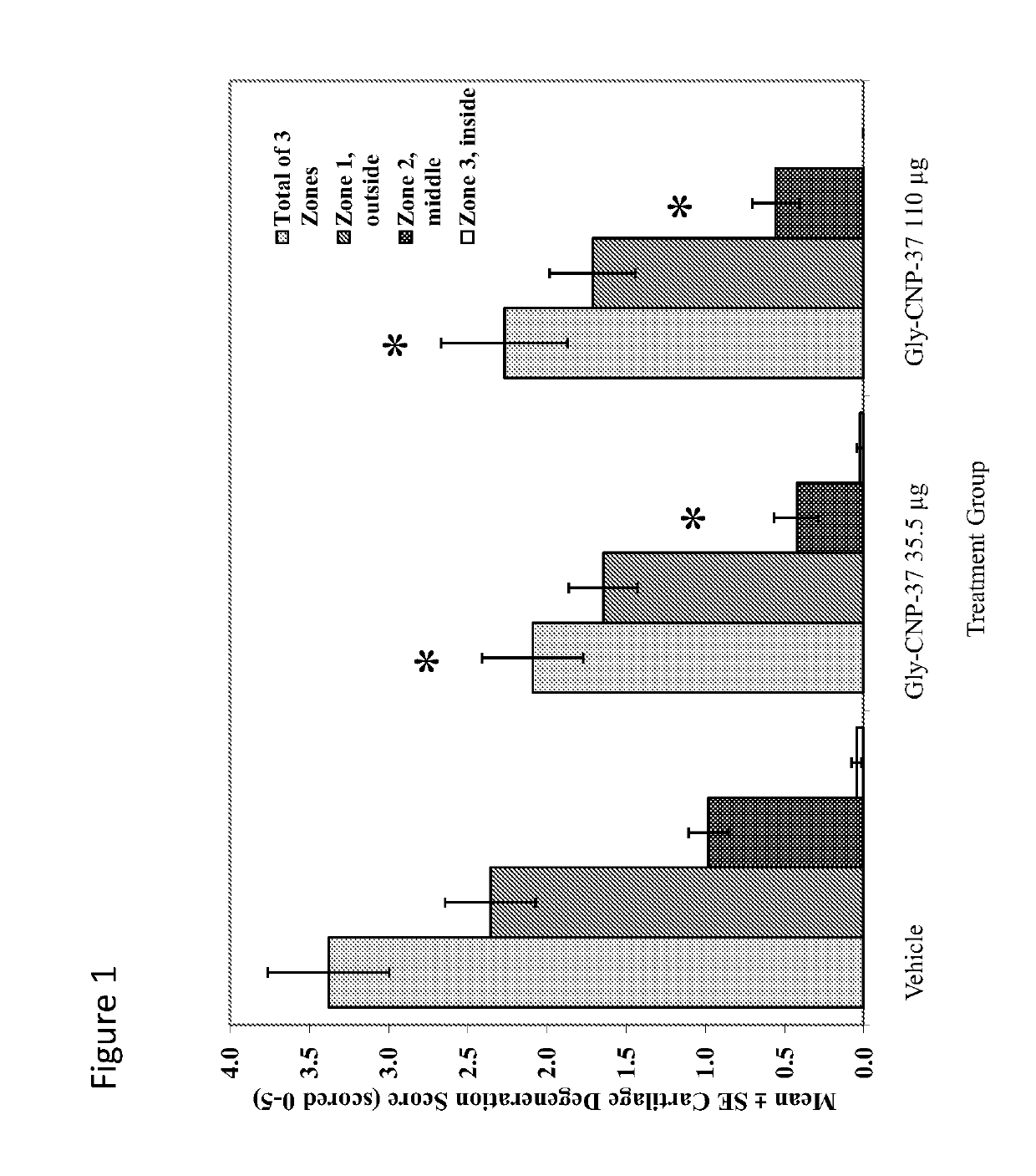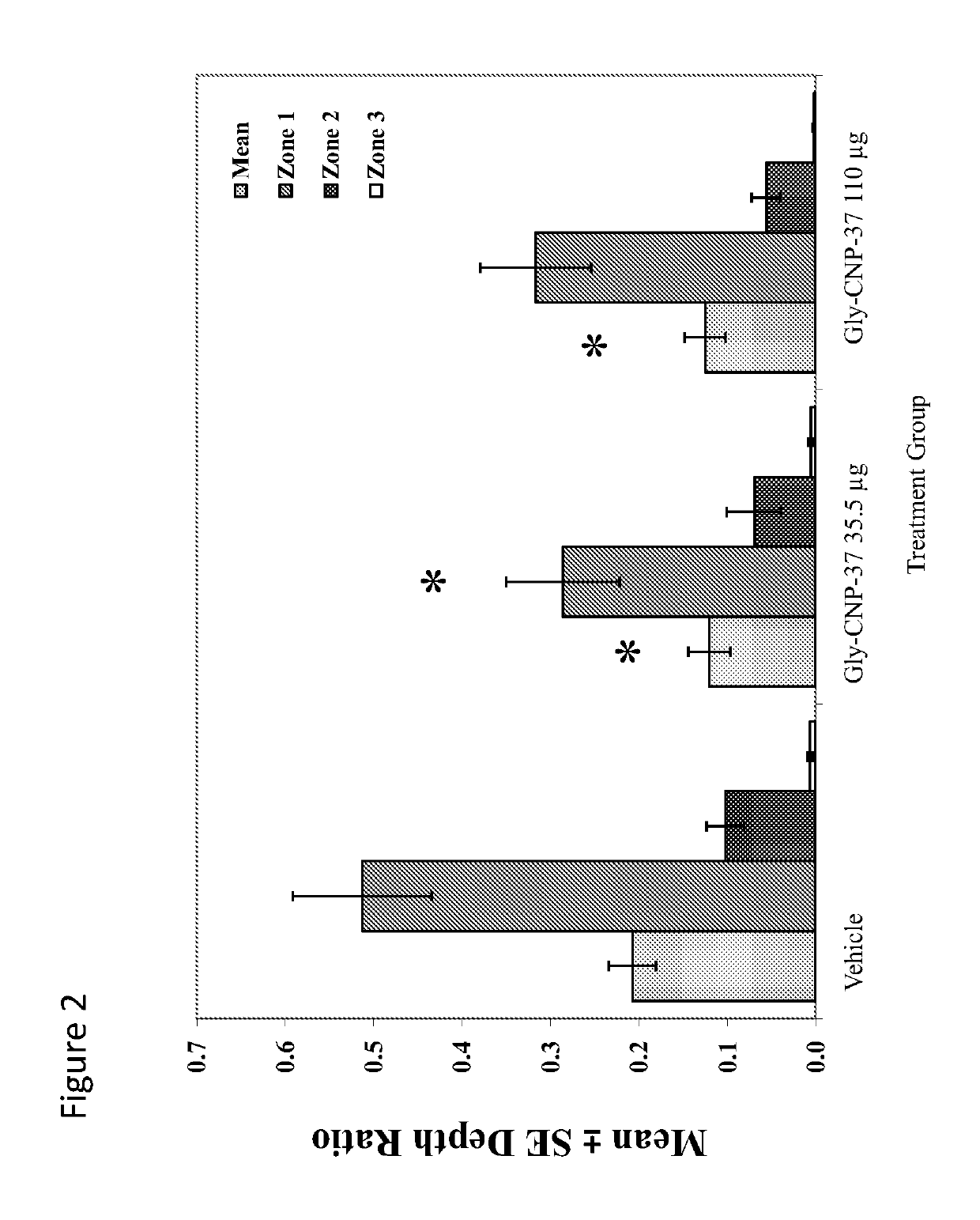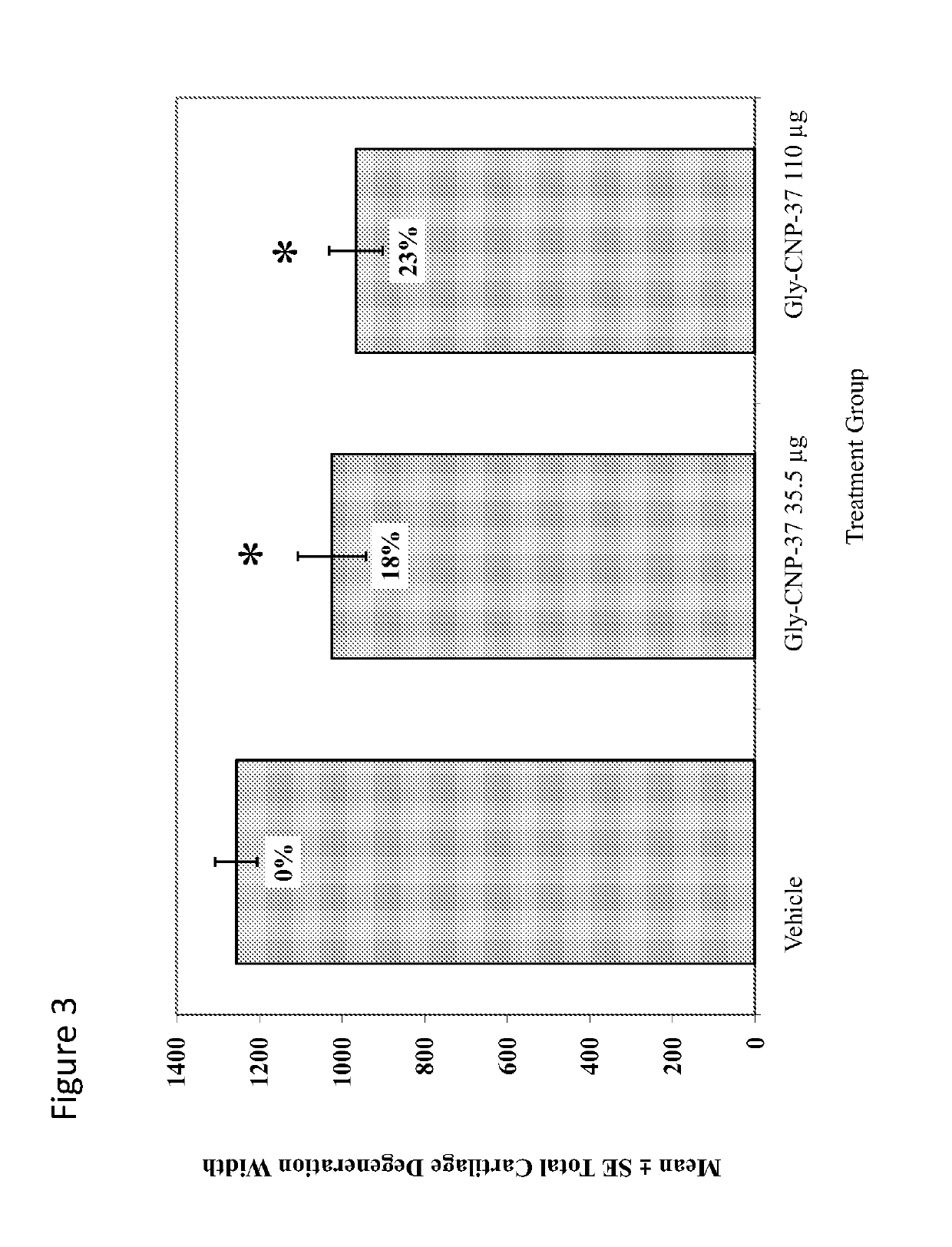Use of c-type natriuretic peptide variants to treat osteoarthritis
a natriuretic peptide and osteoarthritis technology, applied in the direction of peptides, drug compositions, peptides, etc., can solve the problems of aberrant bone or cartilage growth, lowering the effective extracellular concentration of cnp, and only temporary relief of pain relief, so as to reduce the activity of cnp, reduce the effect of calcification of cartilage, and positive effect on cartilag
- Summary
- Abstract
- Description
- Claims
- Application Information
AI Technical Summary
Benefits of technology
Problems solved by technology
Method used
Image
Examples
example 1
Rat Osteoarthritis Model
[0273]A unilateral medial meniscal tear in 275-300 gram rats will result in rapidly progressive cartilage degeneration—characterized by chondrocyte and proteoglycan loss, fibrillation, osteophyte formation, and chondrocyte cloning. This model is performed by transection of the medial collateral ligament just below its attachment to the meniscus so that when the joint space opens, the meniscus is reflected toward the femur. The meniscus is cut at its narrowest point (away from the ossicles) taking care not to damage the tibial surface and making sure that the resulting transection produces separate, freely movable anterior and posterior meniscus halves.
[0274]Progressive cartilage degenerative changes occur and by 3-6 weeks post-surgery, tibial cartilage degeneration may be focally severe on the outer ⅓ of the tibia with degenerative changes of lesser severity in the middle and inner ⅓. Osteophytes are ultimately quite large (medial tibia) and progressively inc...
example 2
[0299]Additional rat studies were performed using the rat model and experimental methodology of Example 1 in order to investigate the use of a second CNP variant, Pro-Gly-CNP-37, in treating osteoarthritis and to compare it to Gly-CNP-37.
TABLE 6Study Design and GroupsNo. ofDoseDoseDoseConcentrationGroupMalesTreatmentRouteRegimenLevel(mg / mL)Dose Volume112VehicleIATIW × 3W0μg050μL212Pro-Gly-IATIW × 3W10.5μg0.2150μLCNP-37312Pro-Gly-IATIW × 3W35.5μg0.7150μLCNP-37412Pro-Gly-IATIW × 3W105μg2.150μLCNP-37512Gly-CNP-37IATIW × 3W105μg2.150μL615VehicleSCQD × 3W0μg / kg00.83mL / kg715Pro-Gly-SCQD × 3W150μg / kg0.180.83mL / kgCNP-37
[0300]As summarized in Table 6, groups of rats were treated with vehicle, Pro-Gly-CNP-37, or Gly-CNP-37. The dose route was intraarticular (IA) or subcutaneous (SC). The dose scheduling was either intraarticular administration three times per week (M, W, and F) for 3 weeks (TIWx3W) or subcutaneous administration once daily for approximately 3 weeks (QDx3W). Rats underwent sur...
example 3
[0315]A model of late stage osteoarthritis was used to evaluate the efficacy of Pro-Gly-CNP-37 in pre-developed osteoarthritis (i.e., primary osteoarthritis). As described above in Examples 1 and 2, osteoarthritis was induced in the rear legs of rats by severing the meniscus. However, in contrast to Examples 1 and 2, the lesion pathology was allowed to progress for three weeks before IA or SC treatment with Pro-Gly-CNP-37 thereby simulating pre-existing OA (i.e., primary osteoarthritis). The overall study design is outlined in Table 9. In particular, male Lewis rats underwent a unilateral medial meniscal tear surgery on Study Day 0; administration of control vehicle or Pro-Gly-CNP-37 began on Study Day 21; and animals were euthanized at scheduled time points following the last dose on Study Day 22 (Groups 1-4) or Study Day 40 (Groups 5-11). The primary endpoints evaluated included histopathological examination of chondrocyte death / cartilage degeneration in the knee.
TABLE 9Late Stage...
PUM
| Property | Measurement | Unit |
|---|---|---|
| number-average molecular weight | aaaaa | aaaaa |
| total mass | aaaaa | aaaaa |
| total mass | aaaaa | aaaaa |
Abstract
Description
Claims
Application Information
 Login to View More
Login to View More - R&D
- Intellectual Property
- Life Sciences
- Materials
- Tech Scout
- Unparalleled Data Quality
- Higher Quality Content
- 60% Fewer Hallucinations
Browse by: Latest US Patents, China's latest patents, Technical Efficacy Thesaurus, Application Domain, Technology Topic, Popular Technical Reports.
© 2025 PatSnap. All rights reserved.Legal|Privacy policy|Modern Slavery Act Transparency Statement|Sitemap|About US| Contact US: help@patsnap.com



